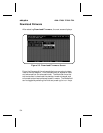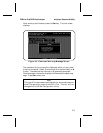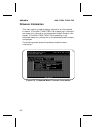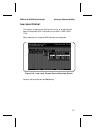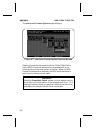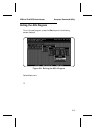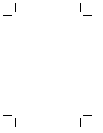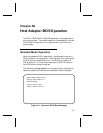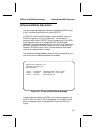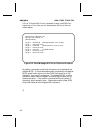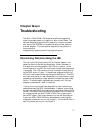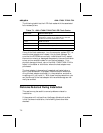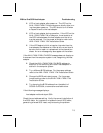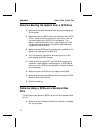
The BIOS version and operation mode of the AHA-
1740A/1742A/1744 appear at the top of the message, followed by a
list of the identified SCSI devices.
In the example shown, a SCSI fixed disk was found at SCSI ID 0
and installed as drive C. No SCSI fixed disks were found at SCSI
ID 1. Drive C is also referred to as drive 80h with an interrupt of
13, which is the software interrupt for disk I/O. If a second drive
were installed with a SCSI ID of 1, it would be referred to as
drive D or 81h. Drives 82h to 8Fh are not currently supported by
the adapter BIOS, so no search is made for other SCSI IDs (2
through 6) as valid disk drives.
Caution should be used when using the AHA-1740A/1742A/1744
in standard mode, since a check is not made for the type of device
being installed. For example, if a SCSI tape drive is installed at
SCSI ID 0, the AHA-1740A/1742A/1744 BIOS would install it as
drive C. This would not work, since the adapter BIOS is designed
to work with SCSI fixed disks only (or removable media if the
media is not removed while the system is turned on).
The adapter BIOS can also install removable media devices as
drive C or drive D. In general, this should not be done. The host
adapter BIOS does not support the removing of media, while the
computer system is operating. If the media is removed while the
computer system is operating you may experience data loss. Re-
movable media (under DOS) should be installed with Adaptec
ASPI software.
adaptec AHA-1740A/1742A/1744
6-2



